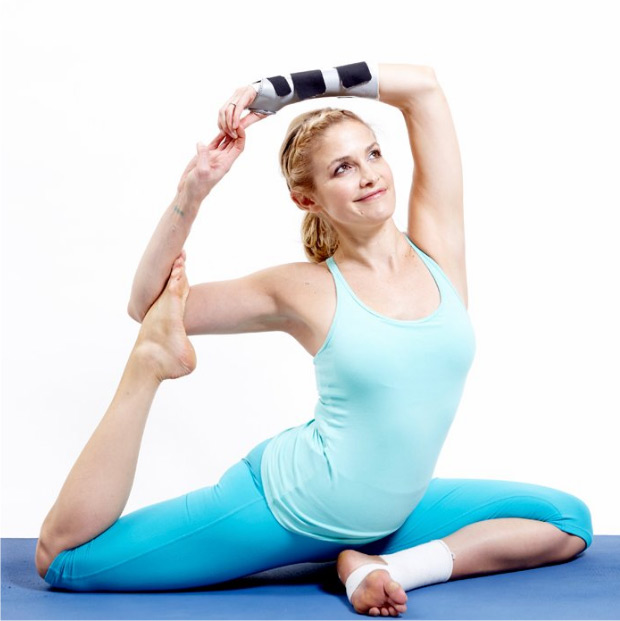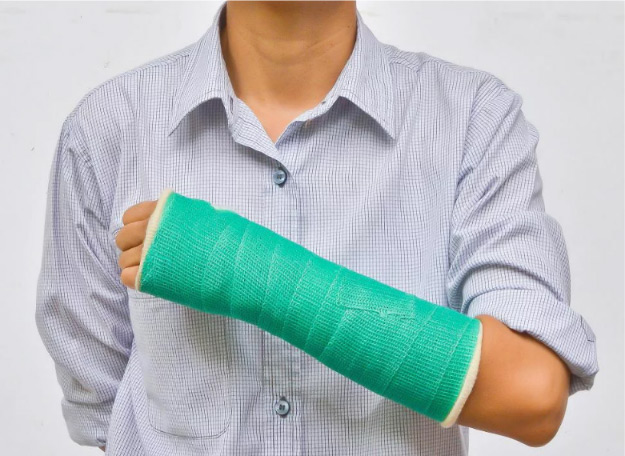A quick misstep on some uneven ground, a reflexive move to perhaps try and intercept a ball or simply being in the wrong place at the wrong time… All it takes is a second and before we know it we’ve somehow ended up with a broken wrist and been put in a heavy plaster cast for 6 weeks.
You may quickly assume that this arm/hand is now automatically out of action for the next month and a half and you’ll need to dust up your skills on doing activities one handed, but did you know that there’s actually a lot you can be doing with your arm while it’s in plaster? All too commonly in our clinic we see patients who have joyfully reached the point where their plaster cast has been cut off only to find that they’re now experiencing shoulder pain or can no longer close their fingers to grip around objects.
“But I thought I would be in and out of my plaster and everything would be fixed!” is a phrase we hear too often. What people may not realise is that although our wrist and hand is plastered, it is incredibly important that we continue to move our shoulder, elbow, fingers and thumbs as much as we can. Naturally with trauma and broken bones people will experience pain at the time of their injury, and even though the fracture may be protected in a plaster cast some people remember their pain experience and hold their arm tucked into their body in a protective position for the duration of their time in plaster.
While you might think that keeping your entire arm as still as possible is good to facilitate the healing of your fracture and to prevent further knocks to the area, what you’re more likely to find is that you will be faced with significant residual stiffness once your plaster cast is removed. Specifically, you may think that having your arm in a sling to support the weight of your plaster and protect it is a useful thing to do.
While slings can initially be beneficial to minimise swelling and discomfort, they should not be worn for extended periods of time as they prevent essential movement at the shoulder. Shoulders are particularly complex and as we move our arm in our day to day activities our shoulder blade and shoulder joint rotate and move fluently in precise ways to facilitate our ability to lift and move our arms.
If these structures do not move over the course of 6-8 weeks you are at a significantly higher risk of developing shoulder pain, stiffness and what is known as a ‘frozen shoulder’ – something you definitely do not want to have on top of trying to recover from a broken wrist!

Also equally as important is the constant moving of our fingers and thumb while in a plaster cast. Unfortunately some plasters are applied and restrict the full movement of a person’s fingers so that they aren’t able to bend. If you find that this has happened to you be sure to speak to your doctor or plaster technician, asking them to adjust the length of the plaster to allow full finger movement. Being able to make a full fist with our fingers is essential to being able to grip and pick up objects.
Our interphalangeal joints of our fingers are particularly quick to stiffen as we age, and this stiffness can be difficult and very uncomfortable to overcome once a plaster has been removed. Similarly our thumb needs to be kept mobile (where possible) in order to allow fine motor movements and pinching. Having reduced movement and strength in our digits significantly impacts on our functional ability to use our hand, so ensuring these joints stay loose and flexible is a must!
Finally, keeping your arm and hand moving where possible encourages ongoing neural stimulation in the part of our brain that works our arm. Human brains are constantly learning (and forgetting!) and not using our hand for an extended time period can decrease our neural connections from our brain to our arm. If this continues our brain can ‘forget’ what our arm feels like and how to move it. When we do try to move it later on, our brain can interpret these unfamiliar neural signals as pain and you may experience difficulty in coordinating movement.
So if you or a friend or family member has an arm that is in plaster, remember that this does not mean that you cannot use it! Keeping your shoulders moving by lifting your arms above your head, out to the side and behind your back is a great way to keep your shoulders loose and prevent stiffness. Continuing to use your affected hand to pick up small objects like cups, pens or a hairbrush will keep your fingers and thumb moving to prevent unnecessary stiffness and increase your confidence to use your hand for light activities.
If you feel that your plaster has been applied too tightly or is restricting movement at a joint that hasn’t been injured be sure to discuss this with your doctor or plaster technician so that this can be rectified. While some activities like heavy lifting are best to steer clear of while in plaster, remember that using your affected hand for light activities and keeping your shoulders, elbow and digits moving will make your road to recovery all the more easier once that dreaded plaster is finally removed!

